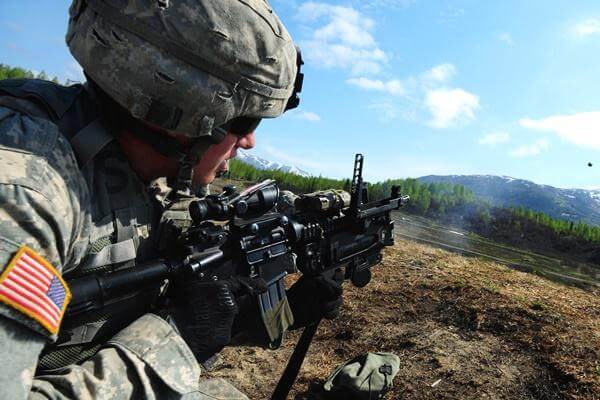U.S. Army testers are scheduled to evaluate an experimental, air-bursting 40mm grenade next summer.
If successful, the Small Arms Grenade Munitions, or SAGM, will transition to Project Manager-Maneuver Ammunition Systems by the end of fiscal year 2015 to become an official Army program of record.
The 40mm counter-defilade round will be twice as lethal as the current 40mm grenade against targets in defilade, according to Army officials from the service’s Armament Research, Development and Engineering Center.
Grenadiers are not as effective as they could be at delivering accurate fire against enemy behind cover, Army officials maintain.
But to become an Army program of record, "we must demonstrate a certain level of functional reliability over selected target sets," SAGM Project Officer Steven Gilbert said in a recent Army press release.
The SAGM project began in early 2012 when Gilbert and a team of engineers within the Joint Service Small Arms Program set out to replace the standard 40mm grenade with an airburst model to be used against enemy in defilade positions.
 "The SAGM cartridge, which is compatible with the Army's 40mm grenade launchers, provides the small-unit grenadier with a higher probability of achieving a first-shot kill against enemy personnel coupled with the ability to defeat personnel targets in defilade positions at increased ranges with greater accuracy and lethality," Gilbert said.
"The SAGM cartridge, which is compatible with the Army's 40mm grenade launchers, provides the small-unit grenadier with a higher probability of achieving a first-shot kill against enemy personnel coupled with the ability to defeat personnel targets in defilade positions at increased ranges with greater accuracy and lethality," Gilbert said.
But Army officials have stressed that his new round is being designed to be complementary to the XM25 – the Army’s 25mm Counter Defilade Target Engagement System.
The XM25 features a target acquisition system that calculates the target range with a push of a button, and transfers the data to the electronic fuse built into the 25mm round. When fired, the projectile is designed to explode directly above targets out to 600 meters, peppering enemy fighters with shrapnel.
Infantrymen who have fired the XM25 in combat say it’s effective at engaging enemy forces hiding behind the short mud walls commonplace across Afghanistan.
But XM25 has had its share of setbacks. Army officials halted operational testing in of the shoulder-fired, 25mm airburst weapon in February 2013 after a soldier suffered minor injuries when the weapon “malfunctioned” in Afghanistan. The weapon experienced a double feed and an “unintentional primer ignition” of one round, Army officials maintain.
Door-kickers have also criticized the five-shot, 14-pound weapon system as being is more of a burden than a benefit to combat units. In March 2013, elements of 75th Ranger Regiment refused to take XM25 with them for a raid on a fortified enemy compound in Afghanistan, sources familiar with the incident said.
After an initial assessment, Ranger units found the XM25 too heavy and cumbersome for the battlefield. They were also concerned that the limited basic load of 25mm rounds was not enough to justify taking an M4A1 carbine out of the mission, sources say.
The SAGM is different from the XM25 system because it doesn't require the soldier to conduct any kind of pre-fire programming sequence. The soldier aims the weapon and fires, and the round detects where a wall is and then explodes, in the air, after passing the wall, Gilbert said.
"It has a sensor that will sense defilade or walls or anything that somebody will be hiding behind," Gilbert said. "And basically detects it without the need of a laser range finder.”
The biggest challenge has been maturing the SAGM sensor to make sure it functions properly against wide array of defilade structures on the battlefield, Army officials maintain.
The system does require the grenadier to be as accurate as possible, Gilbert said.
"He'd have to have good aim ... or the round won't detect the wall,” he said.









